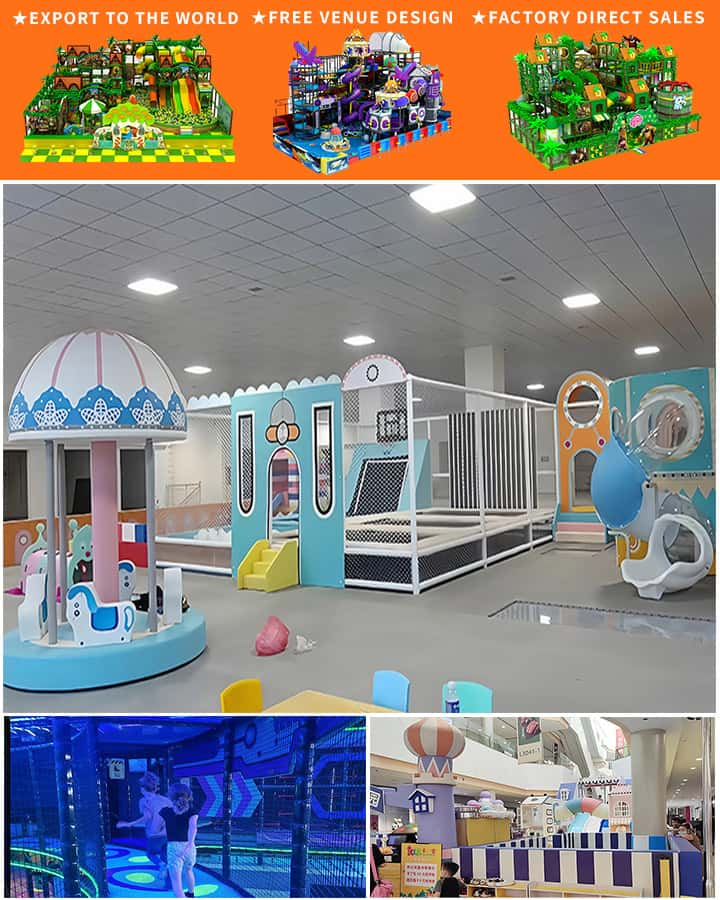Playgrounds have long been a cornerstone of childhood development, providing not only a place for physical activity but also fostering social interactions and imaginative play. The modern playground is a sophisticated environment designed with safety, inclusivity, and educational value in mind. Central to this evolution are the advancements in playground equipment, which now come in diverse forms to cater to various age groups and abilities. This article delves into the essential components of contemporary playground equipment and their impact on child development.
Types of Modern Playground Equipment
1. Climbing Structures
Climbing structures, including ladders, ropes, and cargo nets, are fundamental to playground design. These pieces promote gross motor skills such as balance, coordination, and strength. Modern climbing structures often incorporate multiple levels and varying degrees of difficulty, accommodating children of different ages and skill levels. Safety measures like cushioned surfaces and anti-slip materials enhance user protection.
2. Slides
Slides remain a beloved feature of any playground, captivating children’s imaginations while offering exhilarating fun. Today’s slides come in various designs, from traditional straight slides to spiral and tunnel varieties. They help develop spatial awareness and provide an adrenaline rush that is both thrilling and safe.
3. Swings
Swings are integral for developing vestibular and proprioceptive senses, crucial for overall balance and posture. Contemporary swing sets include options like tire swings, adaptive swings for children with disabilities, and even multi-person swings that encourage cooperative play.
4. Sandplay Areas
 Sandplay areas offer tactile stimulation and opportunities for creative play. They can be equipped with tools like shovels, buckets, and molds to foster imaginative activities such as building sandcastles or digging for ‘treasure.’ These zones support sensory exploration and fine motor skill development.
Sandplay areas offer tactile stimulation and opportunities for creative play. They can be equipped with tools like shovels, buckets, and molds to foster imaginative activities such as building sandcastles or digging for ‘treasure.’ These zones support sensory exploration and fine motor skill development.
5. Interactive Play Panels
Interactive play panels introduce an educational element to physical activity. These panels often feature puzzles, games, and musical elements that engage children intellectually while they play. Such equipment combines physical exercise with cognitive challenges, making learning fun and interactive.
6. Balance Beams and Seesaws
Balance beams and seesaws enhance coordination and cooperation among children. These structures require focus and balance, promoting concentration and body awareness. Modern versions often come with safety features such as non-slip surfaces and rounded edges to prevent injuries.
7. Inclusive Play Equipment
Inclusivity is a significant consideration in modern playground design. Inclusive play equipment accommodates children of all abilities, featuring wheelchair-accessible swings, sensory-rich play panels, and adaptive climbing structures. Such equipment ensures that every child can participate in and benefit from playground activities.
Benefits of Modern Playground Equipment
Physical Health
Regular use of playground equipment promotes physical fitness, reducing sedentary behavior and combating childhood obesity. Climbing, sliding, swinging, and balancing activities enhance cardiovascular health, muscle tone, and coordination.
Social Skills
Playgrounds serve as social hubs where children learn to interact, share, and collaborate. Group activities on playground equipment foster teamwork, communication, and problem-solving skills.
Cognitive Development
Many modern playground features stimulate mental growth by encouraging strategic thinking, creativity, and spatial reasoning. Interactive panels and educational play structures turn ordinary playtime into a learning experience.
Emotional Growth
Engaging in play helps children manage stress and develop emotional resilience. Overcoming physical challenges on playground equipment builds confidence and self-esteem, contributing to overall mental well-being.
Safety Considerations
While modern playground equipment offers numerous benefits, safety is paramount. High-quality materials, appropriate maintenance, and proper installation are critical to ensuring a safe play environment. Surfaces should be shock-absorbent to minimize injury risks, and regular inspections should identify and address potential hazards promptly.
Conclusion
Modern playground equipment has evolved significantly, offering diverse and inclusive options that cater to various aspects of child development. From physical health to social and cognitive skills, these structures play a pivotal role in shaping well-rounded individuals. As technology and design continue to advance, future playgrounds promise even more innovative and enriching experiences for children worldwide. Investing in high-quality playground equipment is an investment in our children’s holistic development, ensuring they grow up healthy, happy, and well-adjusted.




